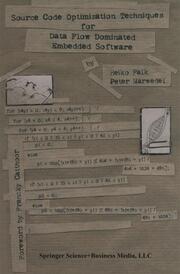Detailansicht
Source Code Optimization Techniques for Data Flow Dominated Embedded Software
ISBN/EAN: 9781441952547
Umbreit-Nr.: 1500949
Sprache:
Englisch
Umfang: xx, 226 S., 61 s/w Illustr., 226 p. 61 illus.
Format in cm:
Einband:
kartoniertes Buch
Erschienen am 14.12.2011
Auflage: 1/2011
€ 165,80
(inklusive MwSt.)
Nachfragen
